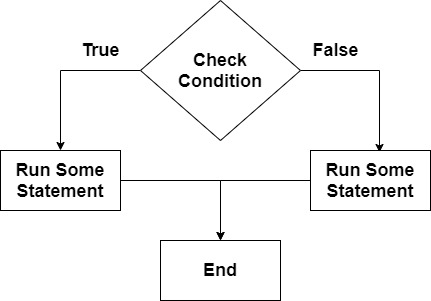Python if, if and else
Decision-making is a very important part of programming. Every programing language has a decision-making statement that helps the programmer make decision-making tasks. In Python if, if … else, and nested if … else statements are used for decision-making tasks. Let’s explore those statements.
Objectives
-
Try to understand how the if else statements are work
-
If statements
-
If else statements
-
Nested If else statements
Try to understand how the Python if else statements are

The above flowchart showing that, first it’s checking a condition, if the condition is true then it will execute some sort of codes or statement and if it false then will run different codes or statement, finally end the whole process.
If you try to understand the flow by a practical example. If today is Friday then it will holiday, if not friday then need to go to school or work.
Python If statements
Syntax
if test condition:
true statement(s)Code
# If condition
age = 25
if age >= 18:
print("Hmm, You are adult.")Output
Hmm, You are adult.
Process finished with exit code 0Python If else statements
Syntax
if test condition:
true statement(s)
else:
false statement(s)Code
# If else condition
age = 16
if age >= 18:
print("Hmm, You are adult.")
else:
print("You are not adult.")Output
You are not adult.
Process finished with exit code 0Python Nested If else statements
Syntax
if test condition:
statement(s)
elif test condition:
statement(s)
else:
statement(s)Code
# Nested If else condition
age = 18
if age < 2:
print("You are baby.")
elif age < 11:
print("You are children.")
elif age < 18:
print("You are adolescents.")
else:
print("You are adult.")Output
You are adult.
Process finished with exit code 0